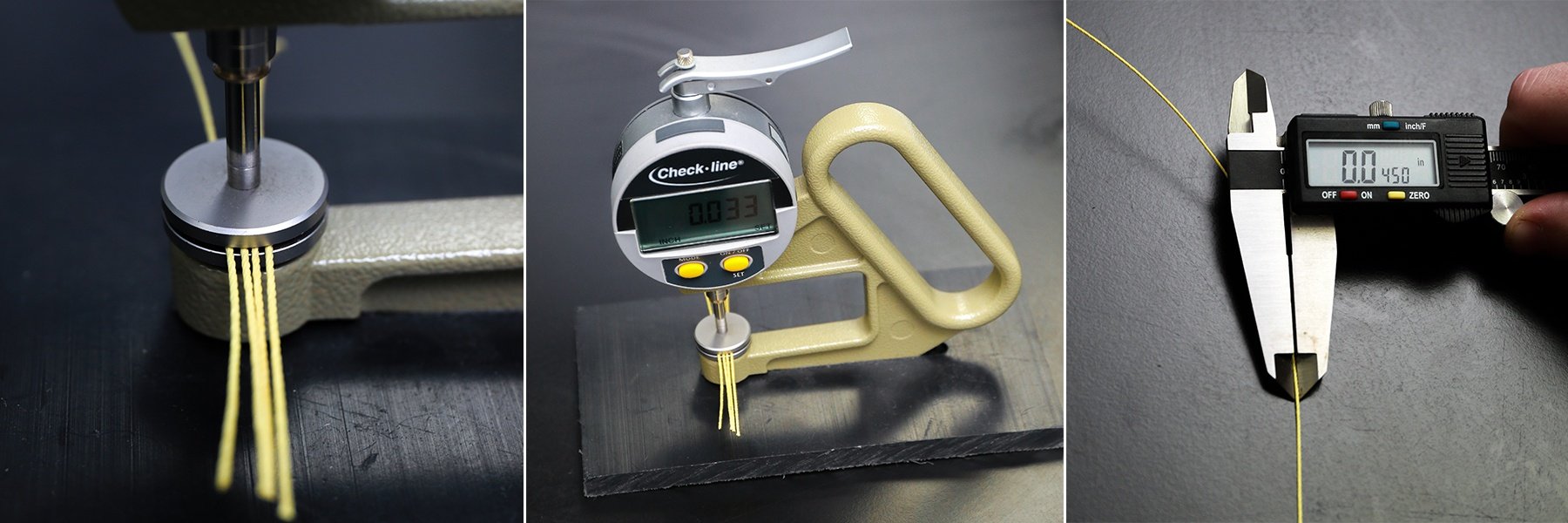
The relationship between yarn diameter and yarn size can be critical in determining the final product and fiber needed to meet specific application requirements. A yarn or thread size and its diameter will affect the coverage of a yarn in a hose, how large of a yarn will fit into a wire or cable, and is important in determining the needle size required in industrial sewing applications.
In our previous blog, we discussed how to estimate the diameter of yarn or thread using the fiber type and yarn size, but you can also estimate the yarn size if all you have is the diameter. Using the same variables and charts, you can use the inverse of our diameter estimate equation to determine the yarn size:
A = Yarn Diameter (mm)
B = Fiber Density (g/cm3)
C = Yarn Size (tex)

For example, if you wanted to estimate the yarn size in denier of a yarn that measures 0.32 mm in diameter, you would take the following steps:
- Determine density of polyester from the chart given below. Polyester density = 1.38 g/cm3
Common Industrial Fiber Densities
Material Density (g/m3) UHMWPE 0.94 Polypropylene 0.946 Nylon 6 1.13 Nylon 6,6 1.14 Polyester (PET) 1.38 Aramid 1.44 PTFE 2.15 E-Glass 2.58 - Plug density and given diameter into the formula as it is illustrated below and the resulting size is 111.11 tex

3. Using the chart below, you can then convert 111.11 tex to the equivalent size in denier: 111.11 tex * 9 = 1000 DN
| Yarn Size Conversion Chart | |||
| Convert To | tex | decitex (dtex) | denier (den) |
| tex | 10* tex | 9* tex | |
| decitex (dtex) | dtex/10 | dtex * 0.9 | |
| denier (den) | den/9 | den/ 0.9 | |
You can also use our yarn size conversion calculator to convert the tex size to your preferred measurement size designation.
Service Thread supplies multiple manufacturers industrial yarns and threads, and has broad knowledge about yarn and fiber application best practices. Let us know if you need help and our expert yarn engineers can help recommend the best fiber type and product construction for your application.



